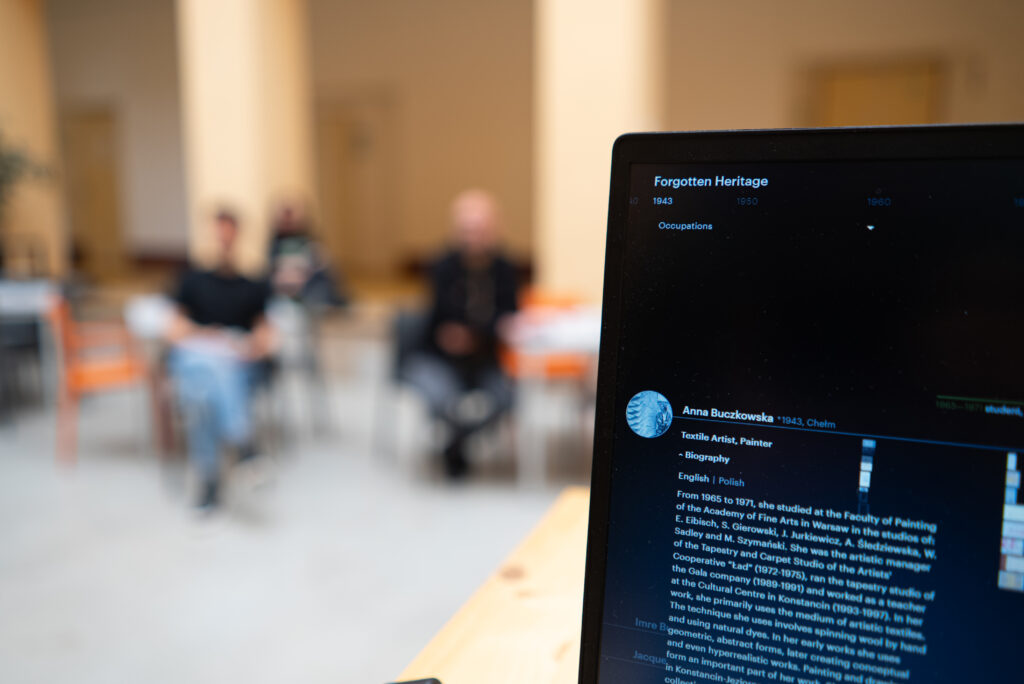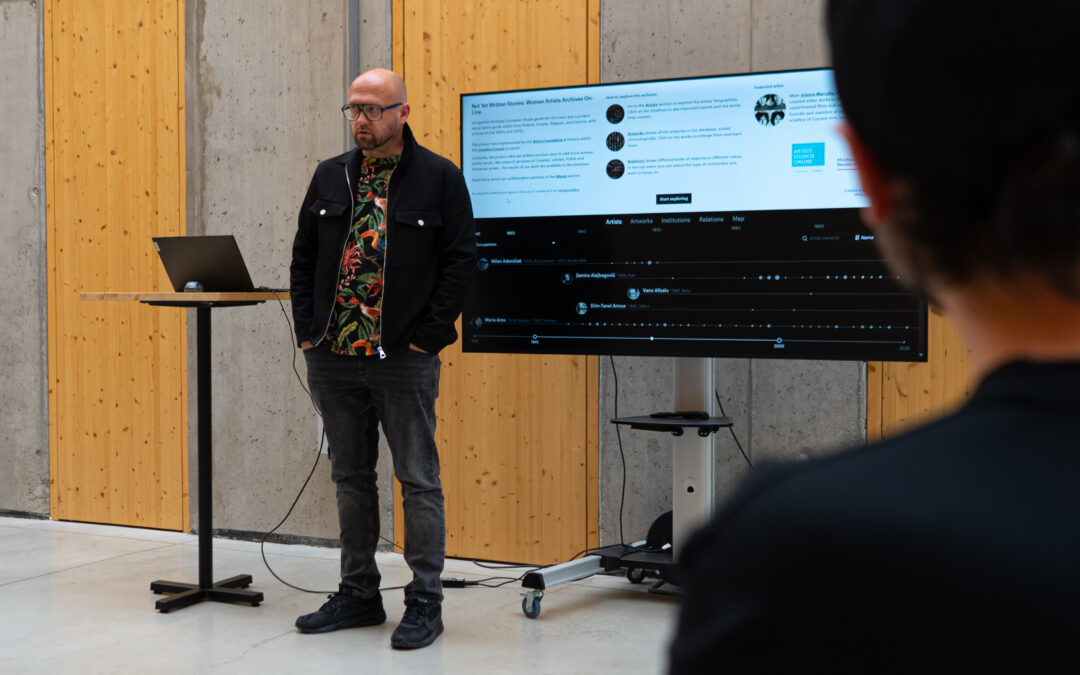Art–Tech Transfer in Visual Art and Digital Archiving
The project Hidden Visegrad Heritage: Artists’ Studios Online was initiated with the vision of archiving and making accessible the artworks of female and male artists from the V4 countries. It focuses on creators whose work holds undeniable significance within the artistic context of their respective countries. Through intensive collaboration among partners from Poland (Fundacja Arton), Slovakia (TUKE, Faculty of Arts), Hungary (acb gallery), and the Czech Republic (Moravian Gallery in Brno), a new segment of an innovative digital archive was created. This archive is open to the general public, educational institutions, and cultural professionals.
A unique aspect of this project lies in its emphasis on interactive and digital virtual environments. Artworks, often stored in private archives, depositories, or studios, have been digitized into high-quality photographs, video documentation, and analytical texts. Some works have been published for the very first time in this way, which transforms digitalization from a simple archival tool into an active process of uncovering and making “forgotten” cultural content accessible.
This platform also serves as an example of the so-called transfer of creative technology into practice, connecting the scientific and technical sphere with the field of cultural heritage preservation. The aim is to ensure long-term sustainability, intergenerational accessibility, and multiplatform use.
One of the main outputs of the project is an upgraded digital database, which is open and freely accessible. The digital archive enables users to search by artist, artistic medium, or country and is enriched with visual materials, curatorial notes, and documentation of artists’ studios. This approach creates a new model of “open studios in digital space,” which can serve not only as an inspirational source for artists or art theorists but also as an educational tool in the fields of art history, digital humanities, or media education.
A significant contribution of the Faculty of Arts at the Technical University of Košice was the integration of digital research and art education. The faculty actively participated in the curatorial selection of works, prepared expert outputs, and organized a series of workshops and lectures aimed at engaging students, educators, and the wider public. Special attention was given to the works of two outstanding Slovak artists – Milan Adamčiak and Rudolf Sikora – whose creations represent diverse aspects of intermedia and conceptual art. Their work offers students a deeper understanding of the relationship between idea and form, as well as the social and historical context.
The creation of the archive also involved a team from the Faculty of Arts at TUKE. One of the project coordinators was doc. Mgr. art. Ing. Richard Kitta, ArtD., who also acted as the curator of the Slovak selection. The team further included Slovak art theorists PhDr. Katarína Bajcurová, CSc., and Mgr. art. Gabriela Garlatyová, PhD., as well as theorist Mgr. art. Tomáš Marušiak. This group was responsible for the selection of works, expert processing, digitization, and curatorial interpretation of the works by Milan Adamčiak and Rudolf Sikora. Their professional work ensured that these artworks were well integrated into the international archive, significantly enriching the representation of Slovak artists at the European level.
However, Hidden Visegrad Heritage: Artists’ Studios Online does not stop at publishing existing works. Its vision is the long-term development of a digital environment that will serve as a growing database, open platform, and tool of collective memory for the entire Central European region. The principle of openness and international digital collaboration allows other institutions to join the project, establish partnerships, create educational modules, and advance research in the field of digital aesthetics, archiving, and cultural preservation. The project confirms that digitalization in art is not merely a technical act but a complex cultural and social process capable of connecting the past, present, and future.
Hidden Visegrad Heritage: Artists’ Studios Online (2023 – 2025)
https://www.facebook.com/ForgottenHeritage.eu
https://www.forgottenheritage.eu/artists



















